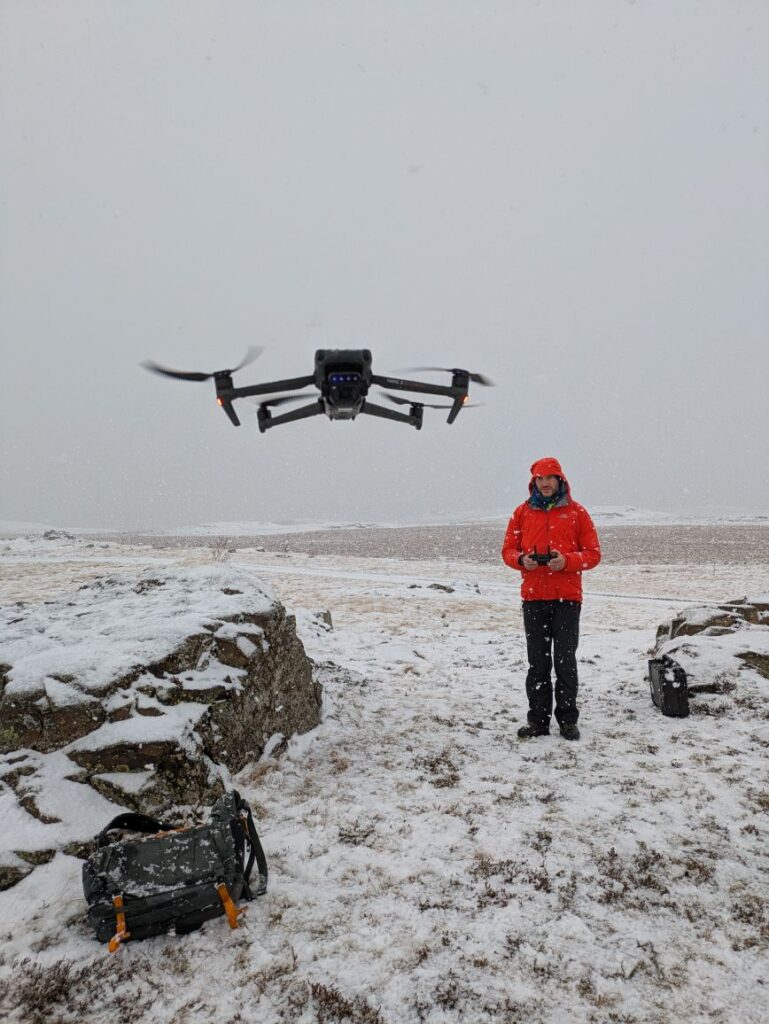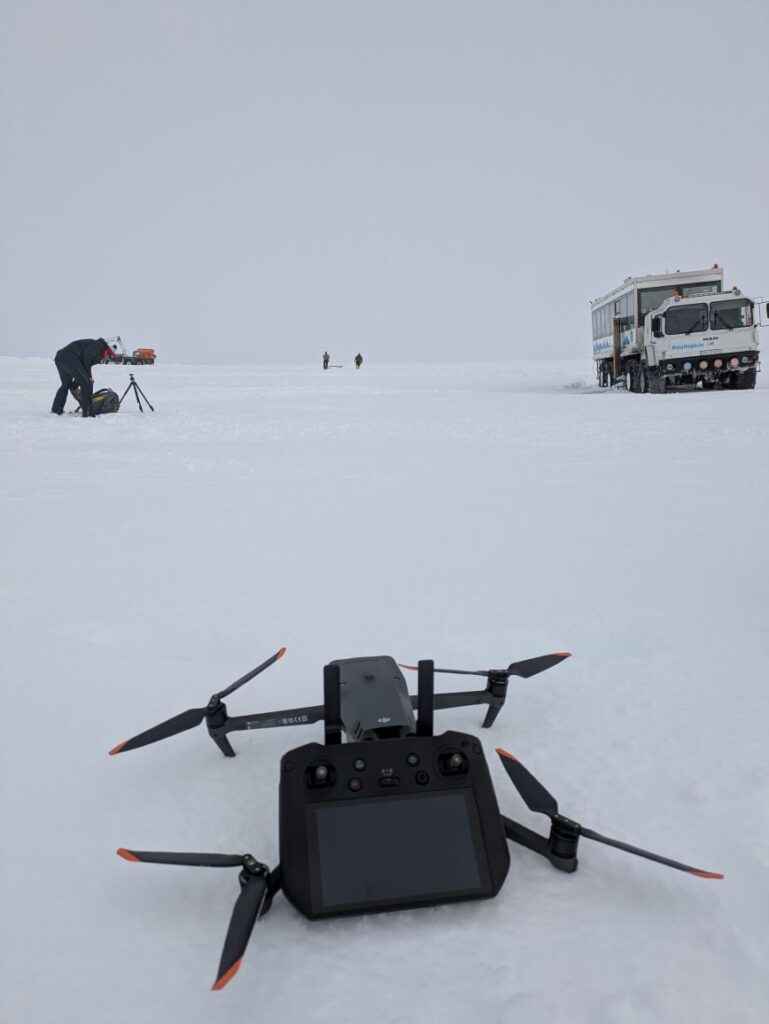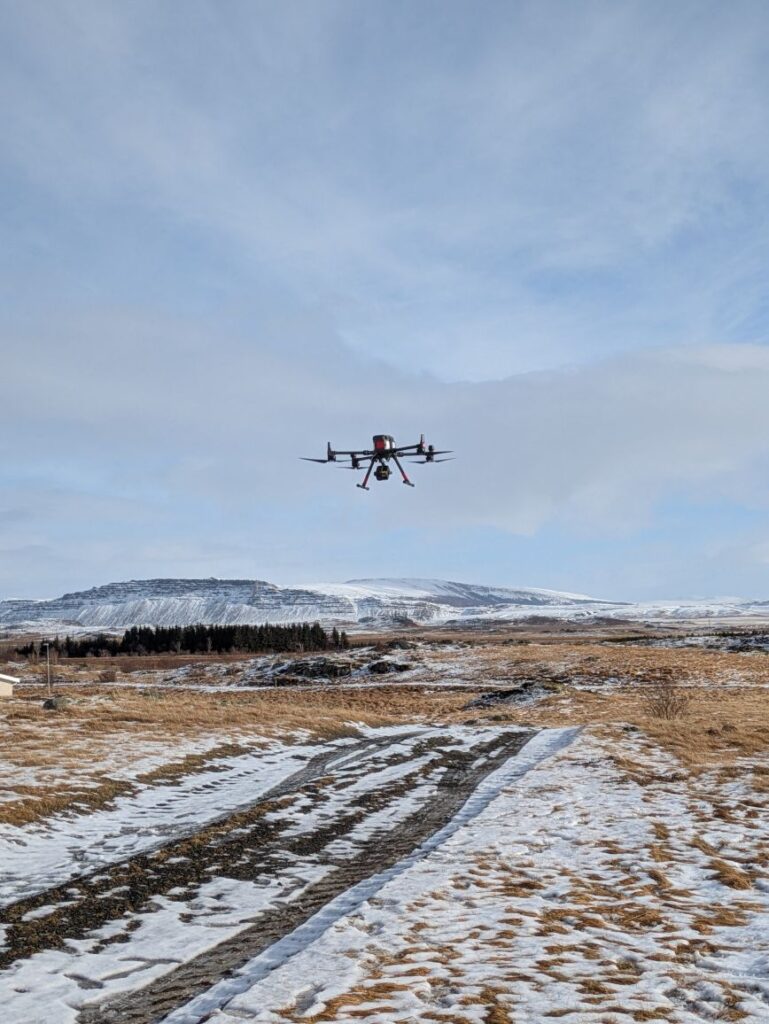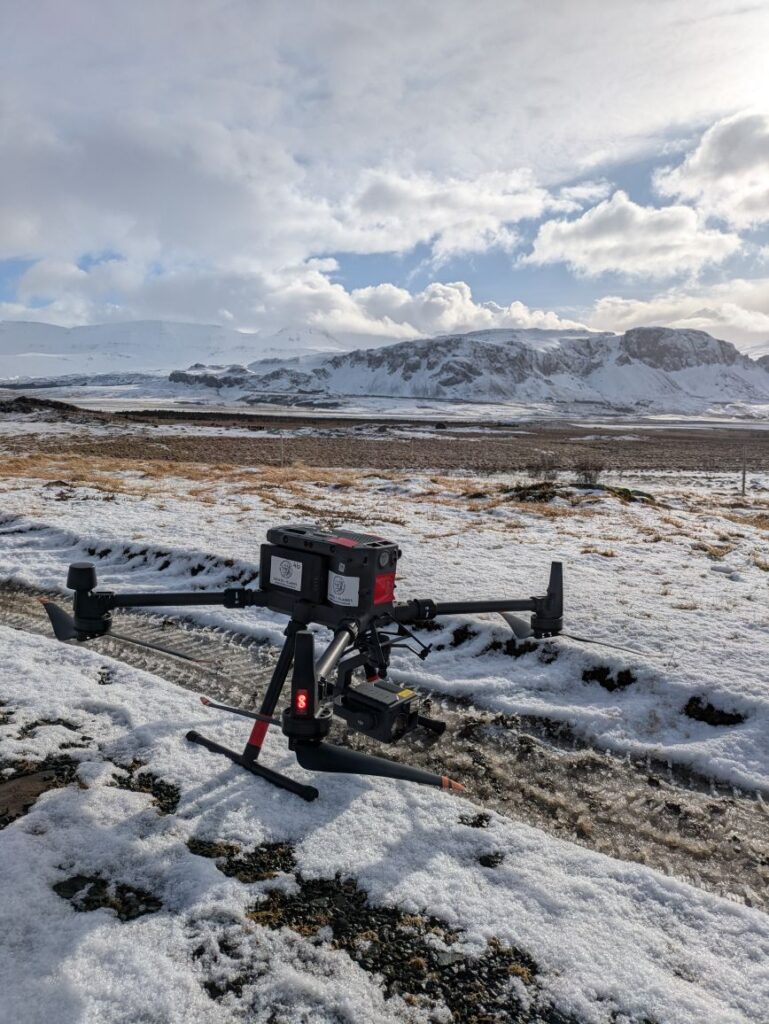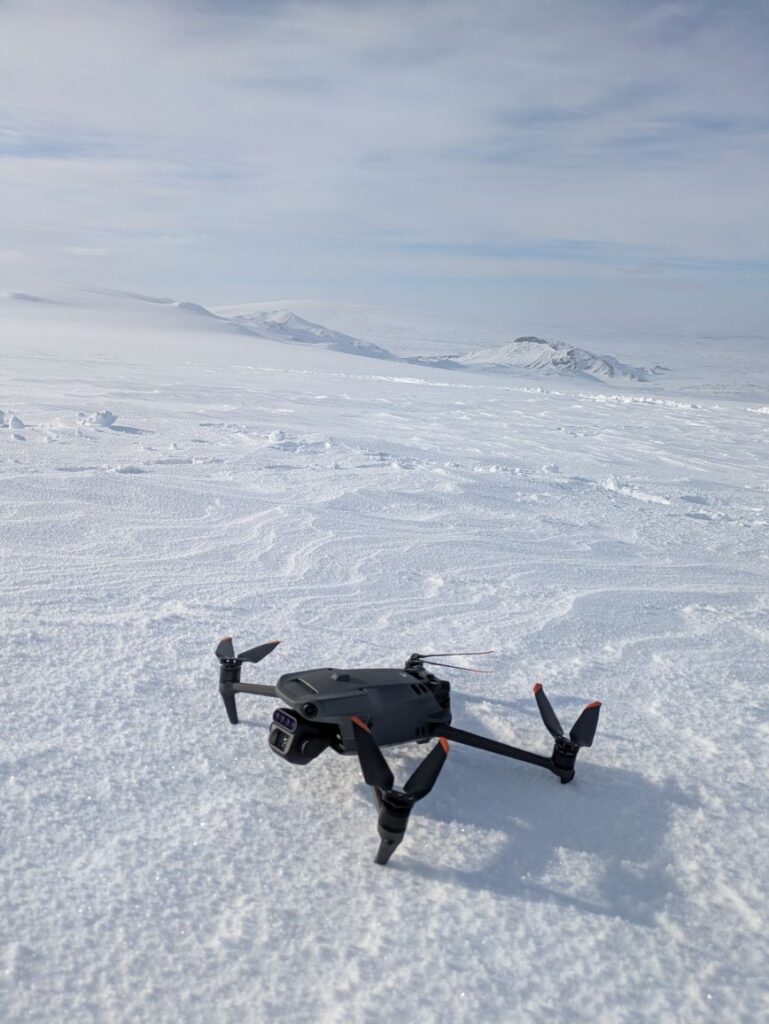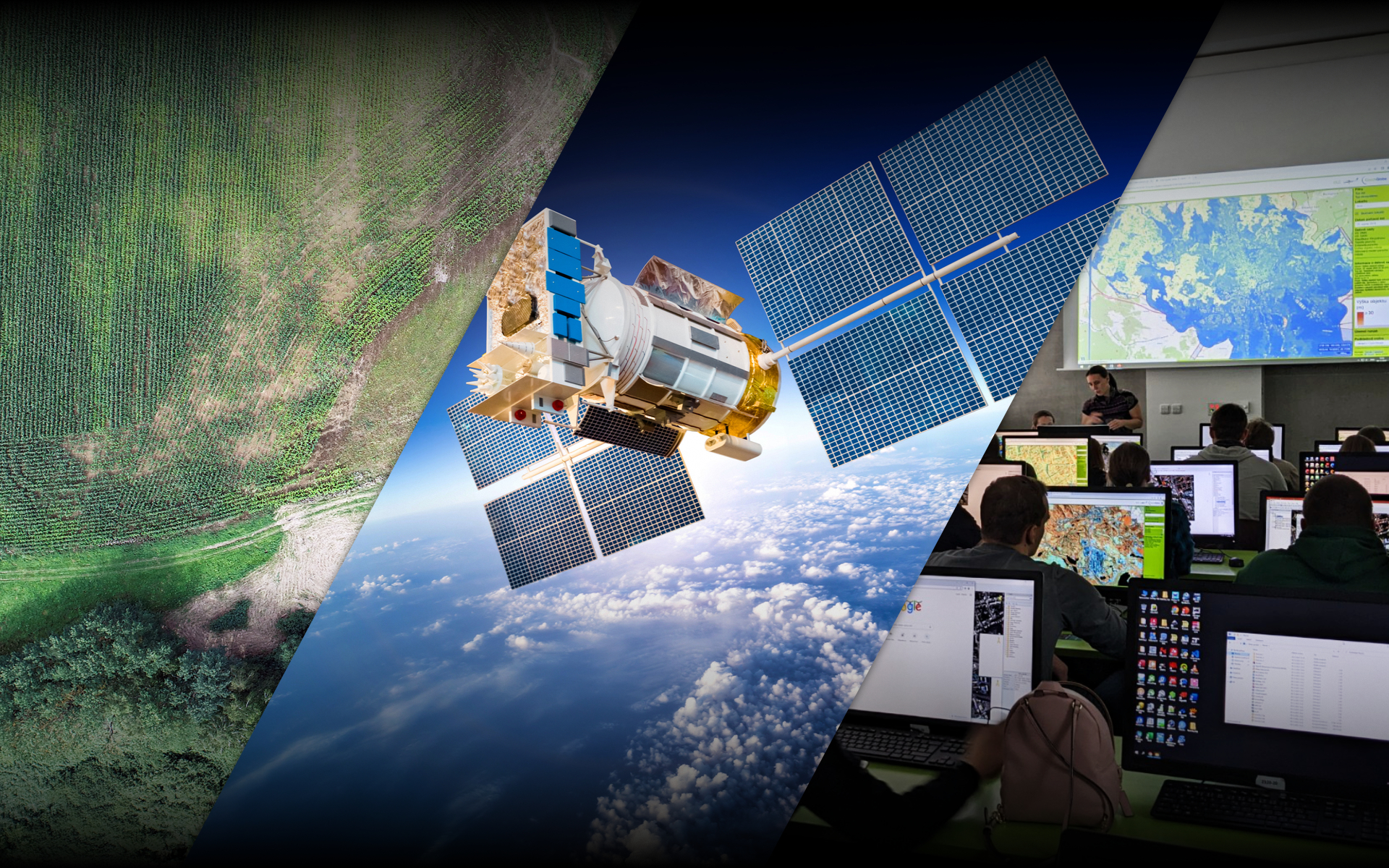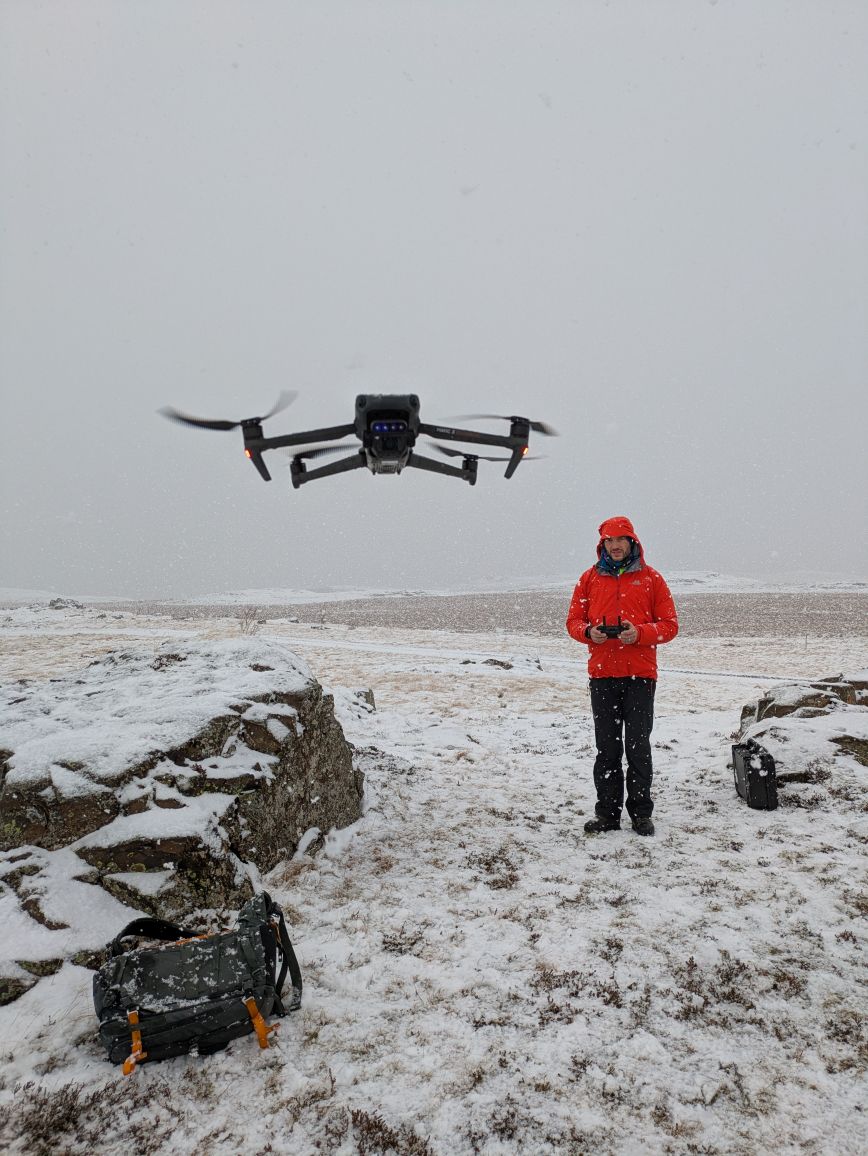Author: Jan Komárek
From March 2nd to 8th, 2025, we had the opportunity to participate in the 2nd Polar Winter School in Hvanneyri, Iceland, organized by the Czech University of Life Sciences Prague in collaboration with Landbúnaðarháskóli Íslands and the Nordic Snow Network. The event brought together students and experts from 14 countries, focusing on Arctic research, particularly remote sensing and snow science.
The first couple of days, students experienced wind and precipitation in all forms, and then they were rewarded with beautiful weather. Polar Winter School offered an exceptional educational experience focused on the critical study of polar regions currently facing dramatic changes due to climate change. During the week, participants visited a hydroelectric power plant, made snow pits to analyse snow properties and profiles, visited the Langjökull glacier and ice cave, and measured the snow impurities. The programme also included lectures from experts from the Czech Republic, Finland and Iceland on many topics, including snow physics, air pollution, Icelandic soil and remote sensing, drone geometry and radiometry.
Drones play a key role in the research, but working in Arctic conditions presents unique challenges. One of the most intense experiences occurred during a flight over the Langjökull Glacier, where the low temperatures caused ice to form rapidly on the propellers. This led to instability mid-flight, forcing us to adjust flight patterns and altitude to regain control quickly. Icing on drone propellers is rare, so troubleshooting in real time was a valuable learning experience. Flying along the coastline was equally demanding. Strong winds made maintaining a stable flight path difficult, and heavy snowfall reduced visibility and increased the risk of losing signal. The drones provided valuable insights into how snowpack and ice formation vary in different conditions. These challenging flights underscored the importance of understanding how environmental factors affect drone performance and data accuracy in polar regions.
We used multispectral and thermal sensors to learn and think about snow cover measurements, surface temperature, and ice structure. The multispectral data may help identify variations in snowpack thickness and density, while the thermal sensors may reveal temperature gradients and the effects of wind on snow melting patterns.
Polar Winter School gave us valuable remote sensing and Arctic field research expertise and experience working in an international team under extreme conditions. It was an excellent opportunity to connect theoretical knowledge with real-world research.
More information: Polar Winter School and FES CZU
